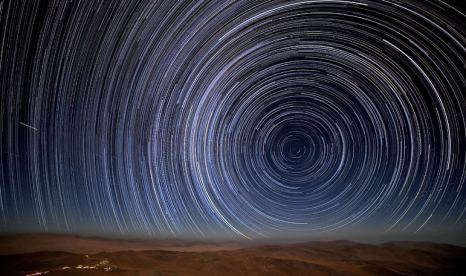Like a child’s top, the Earth has a bit of a wobble as it spins on its axis. This is called precession and over the course of about 26,000 years, it causes the Earth’s celestial poles to slowly move in a circle. As a result, the star closest to true north (or south) changes over time.
Occasionally, there is no bright star near the celestial pole, as is the case in the Southern Hemisphere today.
4,500 years ago, it is believed the Egyptians used the star Thuban to align the Khufu pyramid with true north. As Thuban never set and all the other stars appeared to revolve around it, the Egyptians regarded the North Star as the portal to heaven. This played a vital role in their belief of the afterlife. There were many, many otherworldly steps involved when a pharaoh died, but eventually his soul travelled to Thuban where he joined with the Sun god Ra. From this lofty perch, he then ruled over the celestial realm, just as he had on Earth.
The following stars have repeatedly reigned as the North Star:
- Present day: Polaris
- 4,000 AD: Gamma Cephei
- 10,000 AD: Deneb
- 14,000 AD: Vega
- 21,000 AD: Thuban will once again wear the North Star crown
The South Star
While there is currently no bright star close to the South celestial pole, for the past 2,000 years, people have used the constellation Southern Cross to find true south. It won’t be until 4,200 AD that Gamma Chamaeleontis will lay claim to the title.










